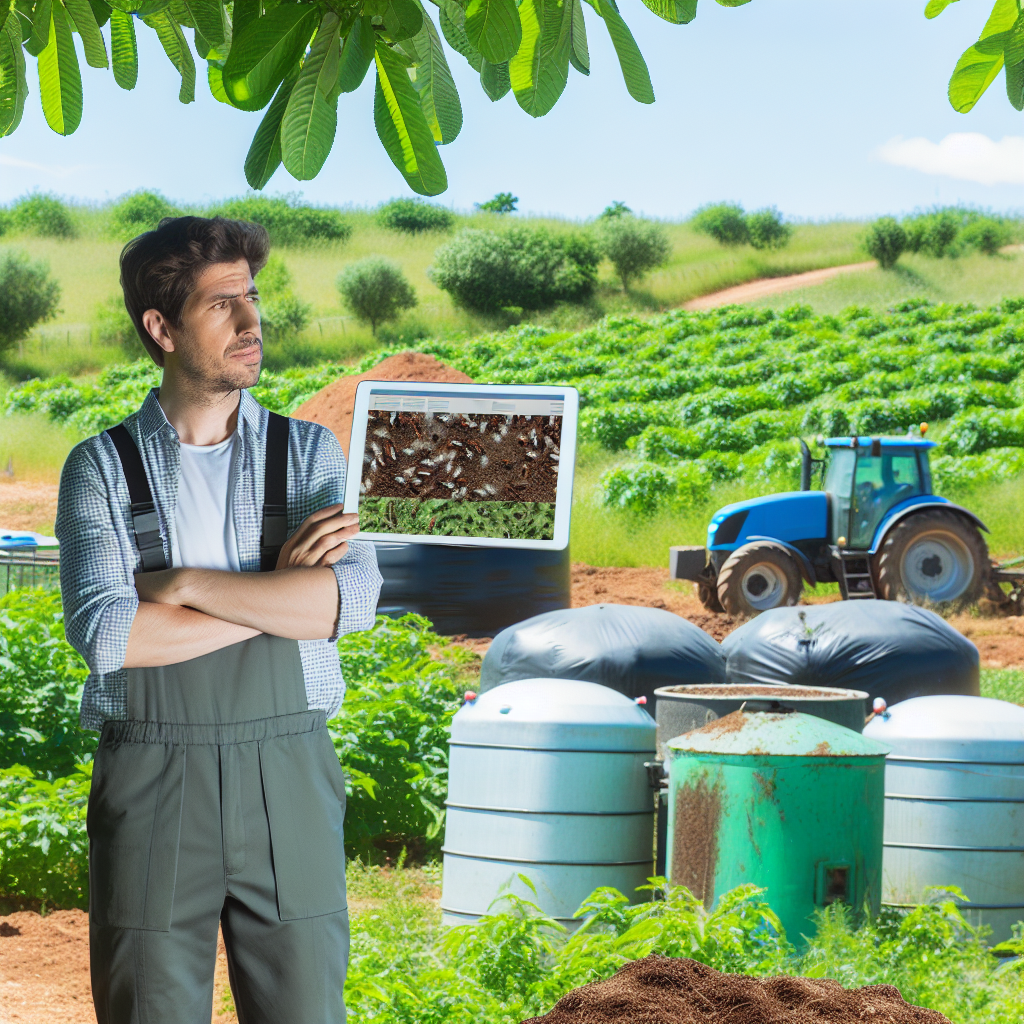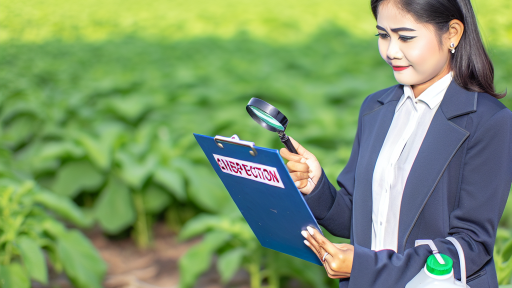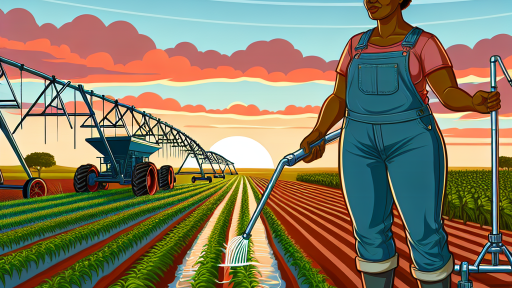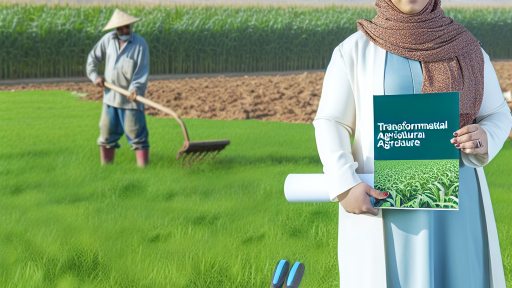Understanding the Impact of Chemical Dependency in Agriculture
Overview of Chemical Dependency
Chemical dependency in agriculture refers to reliance on synthetic inputs.
These inputs include fertilizers, pesticides, and herbicides.
Farmers often use these chemicals to enhance crop yields.
However, this reliance has numerous consequences.
Environmental Consequences
Chemical dependency leads to soil degradation and pollution.
Excess fertilizers can cause nutrient runoff into water bodies.
This runoff creates algal blooms, which harm aquatic life.
Pesticides can also affect non-target species, including beneficial insects.
Ultimately, this damages biodiversity and disrupts ecosystems.
Human Health Risks
Farmers and agricultural workers face health risks from chemical exposure.
Additionally, pesticide residues can enter the food chain.
Consumers may unknowingly ingest harmful substances.
Research indicates links between chemical exposure and chronic diseases.
Economic Aspects
Chemical dependency can create economic vulnerabilities for farmers.
Purchasing synthetic inputs adds significant costs to farming operations.
Transform Your Agribusiness
Unlock your farm's potential with expert advice tailored to your needs. Get actionable steps that drive real results.
Get StartedMoreover, market fluctuations can affect the affordability of these chemicals.
When external factors increase costs, farmers face reduced profitability.
Alternatives to Chemical Dependency
Understanding these impacts highlights the need for alternatives.
Farmers can adopt sustainable practices to minimize chemical use.
Such strategies improve soil health and increase resilience.
Shifting towards organic farming or integrated pest management can provide solutions.
Exploring Organic Farming Practices as an Alternative
Defining Organic Farming
Organic farming focuses on sustainable agricultural practices.
This method avoids synthetic chemicals and fertilizers.
Instead, it relies on natural processes and materials.
Organic farming enhances soil health through biodiversity.
Benefits of Organic Practices
Organic farming reduces exposure to harmful pesticides.
This practice improves the quality of food produced.
Moreover, it increases soil fertility without chemical additives.
Additionally, organic farming supports local ecosystems.
Implementing Organic Techniques
Farmers can adopt crop rotation to maintain soil health.
Moreover, intercropping diversifies crop production.
Cover crops improve soil structure and prevent erosion.
Employing organic compost increases nutrient availability.
Challenges in Transitioning
The transition to organic farming can be challenging for some farmers.
Initial costs may be higher compared to conventional practices.
Moreover, farmers might face a learning curve with new techniques.
However, investing in education can mitigate these challenges.
Supporting Resources for Farmers
Various organizations provide guidance for transitioning to organic methods.
For example, the Organic Trade Association offers resources.
Showcase Your Farming Business
Publish your professional farming services profile on our blog for a one-time fee of $200 and reach a dedicated audience of farmers and agribusiness owners.
Publish Your ProfileAdditionally, local agricultural extensions provide valuable information.
Networking with experienced organic farmers can also help.
Implementing Integrated Pest Management (IPM) Techniques
Understanding IPM Principles
Integrated Pest Management is a holistic approach to pest control.
It combines various management strategies to minimize chemical use.
The goal is to manage pests while reducing risks to health and the environment.
Monitoring Pest Populations
Regular monitoring is essential for effective IPM.
Farmers should observe pest levels frequently.
This helps in making informed decisions about interventions.
Utilizing traps can gauge pest populations accurately.
Utilizing Cultural Practices
Cultural practices can significantly reduce pest pressures.
Crop rotation is one effective technique.
By alternating crops, farmers disrupt pest life cycles.
Additionally, proper sanitation practices limit pest habitats.
Employing Biological Control
Biological control uses natural predators to manage pests.
Introducing beneficial insects can help reduce harmful pest populations.
Examples include ladybugs and lacewings that prey on aphids.
Creating habitats for these beneficials encourages their presence.
Implementing Mechanical Control Methods
Mechanical control methods involve physical barriers and traps.
Row covers can protect crops from pests while allowing sunlight in.
Insect vacuums are effective for removing pests from crops.
These methods minimize the need for chemical pesticides.
Utilizing Chemical Controls Wisely
When necessary, select pesticides that are less harmful.
Opt for targeted applications rather than blanket treatments.
Integrating chemical controls with other methods enhances effectiveness.
Farmers should always follow the label instructions carefully.
Educating Farmers and Stakeholders
Education is crucial for successful IPM implementation.
Workshops can teach farmers effective monitoring and control techniques.
Collaboration among local agricultural extension services increases knowledge.
Encouraging dialogue among stakeholders fosters shared learning experiences.
Evaluating and Adjusting Practices
Continual evaluation of IPM practices helps in refining strategies.
Farmers should assess the effectiveness of their pest management.
Feedback loops allow for the adjustment of practices over time.
This adaptability promotes sustainable agricultural methods.
Find Out More: Best Practices for Meeting Animal Welfare Standards on Farms
Utilizing Cover Crops for Soil Health and Fertility
Introduction to Cover Crops
Cover crops are plants grown primarily for soil management benefits.
They provide numerous advantages for farmers and the environment.
Farmers use cover crops to enhance soil fertility and structure.
Furthermore, these crops help prevent erosion and soil degradation.
Benefits of Cover Crops
Cover crops improve soil health by increasing organic matter.
This results in better soil structure and water retention.
Showcase Your Farming Business
Publish your professional farming services profile on our blog for a one-time fee of $200 and reach a dedicated audience of farmers and agribusiness owners.
Publish Your ProfileAdditionally, they enhance microbial activity in the soil.
The diverse root systems of cover crops break up compacted soil.
Choosing the Right Cover Crops
Selecting appropriate cover crops is crucial for success.
Farmers should consider their specific soil needs and climate.
Common options include clover, vetch, and rye.
Each species offers unique benefits and growth characteristics.
Effective Management Practices
Proper management ensures that cover crops fulfill their potential.
Planting timing is essential for maximizing growth and effectiveness.
Farmers should monitor cover crop stages for optimal termination.
Moreover, integrating cover crops with cash crops increases synergy.
Case Studies of Successful Implementations
Numerous farms have experienced success with cover crops.
For instance, the Greenfield Farm reported increased yields.
They grew winter rye followed by corn, resulting in greater productivity.
Additionally, Maple Hill Farm noted significant improvements in soil health.
Future Directions for Sustainable Farming
Cover crops represent a sustainable strategy for agriculture.
They reduce dependency on chemical inputs while enhancing the ecosystem.
Adopting cover crop practices will foster resilience in farming systems.
Ultimately, these methods benefit both farmers and the environment.
See Related Content: Farm-To-Table Legislation and Its Impact on Farm Revenue Streams
Adopting Precision Agriculture Technologies to Minimize Chemical Use
Understanding Precision Agriculture
Precision agriculture leverages technology to enhance farming efficiency.
This approach optimizes field-level management regarding crop farming.
Utilizing data-driven decisions reduces waste significantly.
Consequently, farmers can apply chemicals more effectively.
Benefits of Using Drones
Drones offer real-time data and high-resolution imaging.
Farmers can monitor crops and identify problem areas quickly.
This capability prioritizes targeted interventions over blanket treatments.
Additionally, drones help assess pest activity more accurately.
Implementing Soil Sensors
Soil sensors provide critical data about moisture and nutrient levels.
Farmers can adjust chemical applications based on real-time insights.
This adjustment leads to reduced chemical dependency.
Moreover, it improves crop yield and health.
Utilizing Variable Rate Technology
Variable rate technology (VRT) enhances the application of fertilizers and pesticides.
This method allows farmers to apply varying rates across fields.
As a result, it minimizes excess chemical usage in less needy areas.
Consequently, VRT promotes both environmental sustainability and economic savings.
Adopting Integrated Pest Management
Integrated pest management (IPM) combines multiple strategies for pest control.
Farmers utilize biological controls, crop rotation, and resistant varieties.
This approach minimizes reliance on chemical pesticides.
Furthermore, it enhances long-term pest management effectiveness.
Educating and Training Farmers
Educating farmers about precision technologies is crucial.
Showcase Your Farming Business
Publish your professional farming services profile on our blog for a one-time fee of $200 and reach a dedicated audience of farmers and agribusiness owners.
Publish Your ProfileTraining programs can enhance their skills in digital tools.
Accessible resources promote adoption of sustainable practices.
Ultimately, informed farmers make better decisions for their crops.
You Might Also Like: How Agricultural Policies Address Climate Challenges

Encouraging Crop Rotation Systems to Disrupt Pest Cycles
Understanding Crop Rotation
Crop rotation involves changing the type of crop grown in a specific area each season.
This practice interrupts pest and disease cycles that can lead to dependency on chemicals.
Furthermore, it enhances soil fertility and helps maintain balanced ecosystems.
Benefits of Crop Rotation
Implementing crop rotation significantly reduces the number of pests.
It also minimizes the buildup of pathogens in the soil.
Additionally, diverse crops can enhance nutrient availability.
Farmers notice improved yields and better crop quality over time.
Steps to Implement Crop Rotation
- Start by planning your crop schedule for the coming seasons.
- Incorporate legumes to fix nitrogen levels naturally in the soil.
- Rotate between deep- and shallow-rooted plants to optimize soil structure.
- Keep records of crop performance and pest occurrences.
Overcoming Challenges
Some farmers may resist changing tried-and-true practices.
Addressing these concerns requires providing education on the benefits.
Sharing success stories from peers inspires confidence in new methods.
Moreover, technical assistance can help navigate crop planning.
Innovative Approaches to Enhance Sustainability
Encouraging crop rotation leads to innovative ways to reduce chemical dependency.
This agricultural strategy fosters sustainability while promoting productivity.
You Might Also Like: Wildlife Conservation Regulations in Farming
Enhancing Biological Controls Through Beneficial Insects and Microorganisms
Introduction to Biological Controls
Biological controls offer an eco-friendly approach to pest management.
They utilize natural predators and microorganisms to reduce chemical reliance.
This strategy promotes a healthier ecosystem for crops and soil.
Benefits of Beneficial Insects
Beneficial insects play a significant role in pest control.
Ladybugs, for instance, consume aphids and other harmful pests.
Moreover, parasitic wasps can target specific pest populations.
These insects help maintain balance within agricultural systems.
This balance reduces the need for chemical pesticides.
Utilizing Microorganisms in Agriculture
Microorganisms are essential for healthy soil and crop growth.
Bacteria and fungi can enhance nutrient availability for plants.
For example, mycorrhizal fungi improve nutrient uptake through root associations.
Additionally, certain bacteria can suppress plant pathogens effectively.
Integrating Beneficial Organisms into Farming
Successful integration of beneficial organisms requires planning.
Farmers should assess existing pest populations and soil health.
Next, they can select appropriate beneficial species based on needs.
Monitoring and adjusting strategies over time ensures effectiveness.
Challenges and Considerations
While beneficial organisms offer many advantages, challenges exist.
Farmers may face difficulties in managing these populations effectively.
Weather changes and environmental factors can impact success rates.
Education and training can help overcome these challenges.
Case Studies and Success Stories
Many farms have successfully implemented biological controls.
For instance, Green Acres Farm reported a 50% reduction in pest damage through ladybug release.
Showcase Your Farming Business
Publish your professional farming services profile on our blog for a one-time fee of $200 and reach a dedicated audience of farmers and agribusiness owners.
Publish Your ProfileFurthermore, Riverdale Organic Farms improved yields using beneficial microbes in soil.
These examples demonstrate the feasibility and effectiveness of biological controls.
Promoting Farmer Education and Community Engagement on Sustainable Practices
Importance of Knowledge Sharing
Educating farmers is essential for reducing chemical dependency in agriculture.
Knowledge sharing fosters sustainable farming practices.
Community engagement facilitates the exchange of innovative ideas.
Furthermore, it empowers farmers to make informed decisions.
Workshops and Training Programs
Local organizations can host workshops to educate farmers.
These programs should cover organic farming techniques.
Additionally, they can address pest management without chemicals.
Farmers learn best through hands-on experiences and demonstrations.
Peer-to-peer training encourages collaboration and support.
Incorporating Technology and Resources
Technology plays a significant role in farmer education.
Online platforms can provide resources and webinars.
Farmers can access valuable information anytime and anywhere.
Mobile applications can offer real-time support for sustainable practices.
Moreover, access to data helps farmers optimize their operations.
Building Community Networks
Establishing local farmer networks fosters a sense of community.
These networks can share successes and challenges openly.
Group initiatives can lead to collective purchasing of sustainable resources.
Strong community ties enhance collaboration among farmers.
Additionally, they can attract funding for sustainable projects.
Involving Educational Institutions
Partnerships with universities can strengthen education efforts.
Students can participate in agricultural research and initiatives.
Guest lectures can introduce new sustainable practices to farmers.
Such collaborations promote the transfer of knowledge and technology.
Moreover, they encourage long-term partnerships for ongoing support.
Encouraging Policy Support
Advocacy efforts should focus on supporting sustainable practices.
Policies can incentivize farmers to reduce chemical usage.
Government programs can provide funding for educational initiatives.
Collaboration with policymakers can enhance resource accessibility.
Finally, community advocacy raises awareness and garners support.




